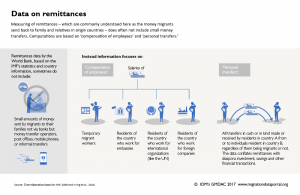Blockchain provides a decentralized database of verifiable financial and non-financial transactions.
Since the late 2000s, Blockchain has emerged as one of the most disruptive technologies in the global digitized transactions market. Launched initially in 2008 to support the creation and trading of Bitcoins and other cryptocurrencies during the financial crisis, Blockchain has gradually expanded into a number of other sectors and industries.
Broadly defined, Blockchain is a software platform known as a distributed ledger technology (DLT) that enables the transfer and verification of virtually any digitized document, whether a currency or any other non-monetary asset.
One of its key merits is that every record created in the Blockchain is indelible and its authenticity can be verified by the entire community authorized to use the platform, instead of a single centralized authority. The system is therefore designed to enhance transparency and accountability at each stage of any digitized transaction.
At least 36 major industries are expected to benefit from Blockchain.
According to a recent report published by CB Insights, there are today at least 36 major industries that are likely to benefit from the use of Blockchain technology, ranging from voting procedures, critical infrastructure security, education and healthcare, to car leasing, forecasting, real estate, energy management, government and public records, wills and inheritance, corporate governance and crowdfunding.
In the international aid sector, a number of experiments are currently being conducted to distribute aid funding through the use of Blockchain and thus to improve the tracing of the ways in which aid is disbursed. Among several other examples, the Start Network, which consists of 42 aid agencies across five continents, ranging from large international organizations to national NGOs, has launched a Blockchain-based project that enables the organization both to speed up the distribution of aid funding and to facilitate the tracing of every single payment, from the original donor to each individual assisted.
As Katherine Purvis of The Guardian noted, “Blockchain enthusiasts are hopeful it could be the next big development disruptor. In providing a transparent, instantaneous and indisputable record of transactions, its potential to remove corruption and provide transparency and accountability is one area of intrigue.”
In the field of international migration and refugee affairs, however, Blockchain technology is still in its infancy.
One of the few notable examples is the launch by the United Nations (UN) World Food Programme (WFP) in May 2017 of a project in the Azraq Refugee Camp in Jordan which, through the use of Blockchain technology, enables the creation of virtual accounts for refugees and the uploading of monthly entitlements that can be spent in the camp’s supermarket through the use of an authorization code. Reportedly, the programme has contributed to a reduction by 98% of the bank costs entailed by the use of a financial service provider.
30% of foreign aid does not reach recipients. Blockchain can help improve transparency and accountability.
This is a noteworthy achievement considering that organizations working in international relief can lose up to 3.5% of each aid transaction to various fees and costs and that an estimated 30% of all development funds do not reach their intended recipients because of third-party theft or mismanagement.
At least six other UN agencies including the UN Office for Project Services (UNOPS), the UN Development Programme (UNDP), the UN Children's Fund (UNICEF), UN Women, the UN High Commissioner for Refugees (UNHCR) and the UN Development Group (UNDG), are now considering Blockchain applications that could help support international assistance, particularly supply chain management tools, self-auditing of payments, identity management and data storage.
The potential of Blockchain technology in the field of migration and asylum affairs should therefore be fully explored.
At the European Union (EU) level, while a Blockchain task force has been established by the European Parliament to assess the ways in which the technology could be used to provide digital identities to refugees, and while the European Commission has recently launched a call for project proposals to examine the potential of Blockchain in a range of sectors, little focus has been placed so far on EU assistance in the field of migration and asylum, both within the EU and in third countries with which the EU has negotiated migration partnership agreements.
This is despite the fact that the use of Blockchain in a number of major programme interventions in the field of migration and asylum could help improve not only their cost-efficiency but also, at least as importantly, their degree of transparency and accountability. This at a time when media and civil society organizations exercise increased scrutiny over the quality and ethical standards of such interventions.
In Europe, for example, Blockchain could help administer the EU Asylum, Migration and Integration Fund (AMIF), both in terms of transferring funds from the European Commission to the eligible NGOs in the Member States and in terms of project managers then reporting on spending. This would help alleviate many of the recurrent challenges faced by NGOs in managing funds in line with stringent EU regulations.
As crucially, Blockchain would have the potential to increase transparency and accountability in the channeling and spending of EU funds in third countries, particularly under the Partnership Framework and other recent schemes to prevent irregular migration to Europe.
A case in point is the administration of EU aid in response to the refugee emergency in Greece where, reportedly, there continues to be insufficient oversight of the full range of commitments and outcomes of large EU-funded investments, particularly in the housing sector. Another example is the set of recent programme interventions in Libya, where a growing number of incidents of human rights abuses and financial mismanagement are being brought to light.
The use of Blockchain in the above cases would help inform, and make accessible to every authorized user of the platform, every single financial transaction, and its direct beneficiary, as well as every major non-monetary activity performed during the implementation of such programmes.
Blockchain can trace almost any major non-financial activity in any given migration and asylum policy cycle.
The potential of Blockchain is indeed not confined to the administration of funds. It extends to the creation of indelible and verifiable digitized records for almost any major non-financial activity entailed in a given project cycle. The technology can therefore help trace and report on all stages of key migration and asylum policy interventions such as:
- Asylum procedures, from initial interviews to final decisions and appeal procedures, in addition to activities related to biometric collection and the administration of major databases such as the European Asylum Dactyloscopy (Eurodac), the Schengen Information System (SIS II) and the Visa Information System (VIS);
- Migrant integration programmes;
- Remittances (both in terms of enabling a significant reduction in transaction costs and facilitating a more accurate identification of the senders and recipients of such flows);
- Detention conditions;
- Missing migrants, particularly children; and
- The full return policy cycle, from host country to country of return.
Although not a panacea, Blockchain could offer major cost-efficiency, transparency and accountability benefits for future migration and asylum programmes
However, just as existing data collection systems should only be viewed as one of several preconditions to successful policy formation and implementation, so should Blockchain and other emerging fintech devices, in addition to the growing use of Artificial Intelligence (AI) to predict future migratory flows, not be considered a panacea. This is particularly so in view of the significant initial investment costs entailed by the establishment of any dedicated Blockchain platform.
It remains that such a disruptive and adaptive technology can only herald some potentially fascinating benefits in the medium and long run, in terms of cost-efficiency, transparency and accountability, in the administration of migration and refugee programmes.
Blockchain therefore deserves to be supported through the launch of well-tailored pilot projects as well as through its possible inclusion in one of the negotiating rounds on the two UN Global Compacts on Migration and Refugees in February-July 2018.
Disclaimer: The opinions expressed in this blog are those of the author and do not necessarily reflect the views of the United Nations or the International Organization for Migration (IOM). The designations employed and the presentation of material throughout the blog do not imply the expression of any opinion whatsoever on the part of IOM concerning the legal status of any country, territory, city or area, or of its authorities, or concerning its frontiers and boundaries.







